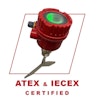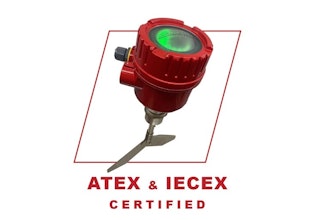Globally, manufacturers are beginning to adapt to Industry 4.0 and smart factory operations, which are enabled by advancements in technologies including mobile devices, radio-frequency identification (RFID), wearables and automated systems. By leveraging the data provided by these technologies, as well as sensors connected to legacy systems, manufacturers have the opportunity to boost output and achieve fully connected operations in the near future. Using this data, manufacturers stand to gain unprecedented visibility into every stage of manufacturing and warehousing processes, including end-to-end supply chain fulfillment, shipping and receiving, points-of-failure identification and, overall, more comprehensive insights into the innerworkings of their operations. Because of these overwhelming benefits, the number of companies employing a fully connected factory is expected to double by 2022.
First Things First – Understanding the Impacts of Outdated Processes on Current and Future Manufacturing Operations
In a recent warehouse survey, three out of four executives reported that outfitting staff with new technology is a top initiative to improve operations and optimize their supply chains. This is no surprise considering that, in another recent study of 1,100 manufacturing executives from various industries, 62 percent responded that they still use pen and paper to track vital production steps. Not only are manual information-capturing and sharing processes incredibly inefficient, but they are also highly susceptible to human error. A smudged note about a production order or an accidental check on a work order sheet could easily result in millions of dollars’ worth of wasted products based on inaccuracies.
To begin to modernize the manufacturing floor, executives must first evaluate their current processes, consider their workers’ daily routines and look for ways in which technology can be used to improve workflows, boost efficiency and ultimately integrate into operations connected by the Industrial Internet of Things (IIoT).
Specifically, they must focus on the present and prioritize investments that benefit their most important asset–their current and future workforce. Today’s workers need technology solutions that can improve their overall productivity without disrupting their workflows, while the next generation of digitally native workers will demand tools that offer the same connectivity that they’ve become accustomed to in their everyday lives. Manufacturers can appeal to both generations by equipping them with easy-to-use yet sophisticated mobile technology that allows them to access software and back-office systems throughout all areas of the manufacturing environment. By doing so, organizations will gain real-time visibility into their operations, and they will also be empowering their employees to become engaged members of the modern manufacturing workforce.
The aforementioned outdated processes waste valuable time and negatively impact current workers’ productivity and conflict with future workers’ demands for information mobility. For those currently in the workforce, antiquated systems only add onto occupational stressors such as increased workloads, downsizing concerns and overtime work, which can all lead to employee burnout and loss of productivity. In regards to the newer entrants to the workforce, which manufacturers will need to focus on recruiting in order to fill 700,000 jobs for skilled manufacturing employees over the next decade, older processes that don’t offer immediate workflow-related insights, or information mobility, will be a major turn off. Fortunately, each of these issues can be addressed by providing workers with flexible mobile solutions that can adapt to any kind of workflow demands.
Choosing the Right Mobile Solutions for The Modern Manufacturing Workforce
Manufacturing workers are constantly mobile and on-the-go, whether they are navigating the shop floor on foot or forklift or constantly transitioning between the office, factory and warehouse. That is why it is incredibly important that the technology that they use is equally as mobile. For example, providing plant floor employees with rugged mobile computing devices that are equipped with a built-in barcode reader allows them to accurately generate real-time inventory status updates in connected back-office systems, providing managers with the information they need to make faster, and more accurate, decisions.
Today there are rugged tablet-based solutions that can be custom-equipped with the precise performance, security, connectivity and usability features required to accommodate mobile workers’ individual device preferences and address a wide set of application workflows. With the majority of manufacturers now viewing improved inventory tracking as a core component needed for operational success, it is especially beneficial that these new rugged mobility solutions have been engineered to deliver a blend of manufacturing-specific technology features (i.e. barcode scanning, specialized I/O, RFID and real-time location systems (RTLS) that make it easy to capture, share and analyze information. However, not all supposedly “rugged” devices are built for enterprise, much less manufacturing, environments. Be cautious of consumer-grade devices that claim an IP65 or IP68 rating is sufficient for manufacturing use. They lack the inherent durability features of an enterprise-grade “rugged to the core” device as well as the more advanced wireless antennas, I/O, and processing technologies that ensure workers stay connected to mission-critical data and each other in dense facilities and hazardous work conditions. Manufacturers also demand true enterprise lifecycles and service programs to ensure they can depend on the mobility solutions. In other words, it is imperative that manufacturers build their mobility solutions using best-of-breed technologies, if they want to achieve the desired level of visibility into the full spectrum of operations without risk of data loss or delay.
When workers have the power of fully connected technology in the palm of their hands, they can increase productivity, efficiency and data input accuracy – all of which have incredible impacts on the bottom line. Further, future-proof rugged mobile computing technology can be used to assist in recruitment and retention, attracting newer generations of workers essential for success in the Industry 4.0 era.
Tom McNeela is Senior Director, Product Management for Zebra Technologies.























